Jeremy Pope on Tackling Gender Norms in Photo Series, Panic Attacks and Getting Symone Out of Drag
- Oops!Something went wrong.Please try again later.
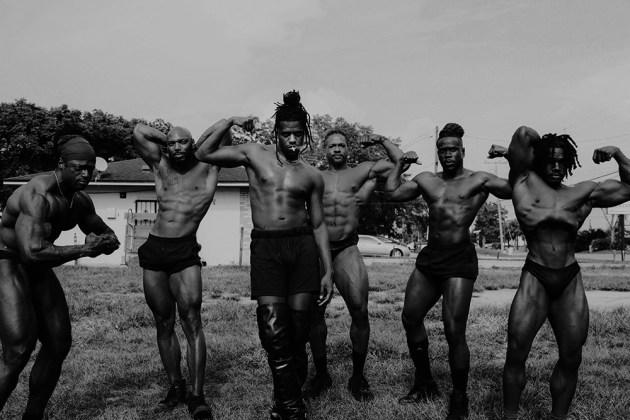
Jeremy Pope conquered Broadway (and earned two Tony nominations in the same year) for work in Choir Boy and Ain’t Too Proud — The Life and Times of the Temptations. He earned an Emmy nomination for a starring role in Ryan Murphy’s Hollywood, and drew raves last year for his dramatic work on the big-screen in The Inspection. With his latest, the 31-year-old is shifting focus to photography as a way to investigate a childhood growing up as gay with a pastor father who also happened to be a professional bodybuilder. The result is a photo series called “Flex (bitch)” that challenges gender norms, finds Pope in drag for the first time and casts RuPaul’s Drag Race star Symone as a shirtless, masculine man puffing on a cigarette. Days before traveling to Miami to debut the series at Scope Art Show (where he’ll also sit for a conversation with Moonlight scribe Tarell Alvin McCraney), Pope hopped on a call with The Hollywood Reporter to discuss the project’s origins, why the series gave him a panic attack and what he learned about himself through the process.
The press notes say this series started as a self-funded creative project that transformed into a therapeutic journey. Where did the idea come from?
More from The Hollywood Reporter
Drag Star Jimbo Signs With WME and Producer Entertainment Group (Exclusive)
Rebecca Rolnick Knaack Promoted to Senior VP Entertainment at Metro Public Relations
RuPaul Memoir 'The House of Hidden Meanings' to Release in March 2024
I’ve been acting for a lot of my life but when I was first in school in New York, my side hustle was working as a photographer shooting headshots and portraits. I really enjoyed it because it allowed me to have a different point of view, and I got to meet and connect with people and highlight their beauty and story. After playing Basquiat on Broadway and promoting The Inspection, I got really heady and wanted to do something that was just for me.
I had an idea to go to Florida to shoot an image that represents what it felt like growing up with a dad who was a pastor and a professional bodybuilder and trying to find my own identity in these spaces that uphold an extreme kind of masculinity or an idea of masculinity. As I began to go on the journey of organizing the shoot, I realized there were a lot of emotional things that kept coming up within myself — trauma, triggers, homophobia — that I learned that even as an out Black queer man, I still had so much unpacking to do.
How so?
The first image I shot, kind of my hero image, is the one of me with all of the bodybuilders. I’m wearing black thigh-high boots and initially, I wanted it to represent masc and femme. But when I was shooting, I had a panic attack because I didn’t know any of the men I was shooting with. They call came from within my dad’s bodybuilding community. I began to question what if me wearing these boots made them feel threatened? How were they going to feel? What were they going to say? What were they going to do? A lot of them didn’t know me as an actor, so I feel like my credits were stripped. I didn’t have privilege in this space. I was just a Black brother.
From my experience as a Black individual, there’s this kind of code; you never want to be clocked. You want to be able to ride as straight passing so you don’t feel like a threat. There was a time when I was walking down the street in Harlem in 2013, and I was wearing what I thought was a fly denim polka-dotted shirt. Someone walked by me and punched me in the face but didn’t say anything. When I got up, I was so confused. Was it a fight? Were they going to steal my phone? No one came and defended me. I think the experience [of shooting the series] brought up personal trauma and ideas about how I choose to identify in the world. What do I deem masculine or feminine? What am I scared of? That’s when I felt like this should be a series.
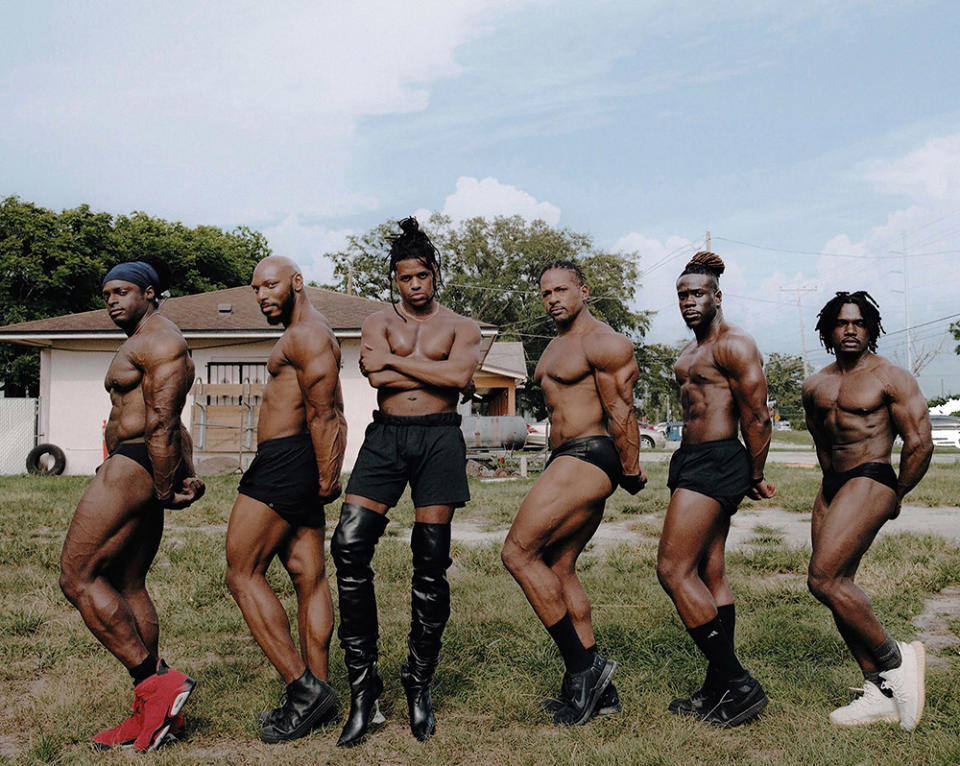
I’m so sorry that happened to you. With so much of this inspired by your father, at what point did you tell him that you were doing this? Has he seen the images?
When you become an adult, or at least in my experience, you realize your parents are parents and they trying to figure it all out just like we are. For me to find love and compassion with family members, not just my dad, but people who maybe walk a different walk than me, I try to stay aligned in my purpose. I very much have the love, affirmation and support from my family. I feel very grateful that I’m in a place where I receive that. But for something like this, if I thought about it too much [their reaction], I would get almost sick and not want to do it. He’s been so supportive. Over the years he’s evolved so much as he’s seen me go and do what I have to do. He’s always loved me unconditionally.
I don’t know the answer to this, but I wonder if I weren’t as successful, what would that support look like? Not just from him, but from people. It’s easier for people to accept you in your differences when you’re being great. But if I was just existing, day-to-day, 9 to 5, and wasn’t on the cover, wasn’t doing interviews, would I have the same support? It’s layered, it’s nuanced, and that goes for Black, brown, white, straight, gay.
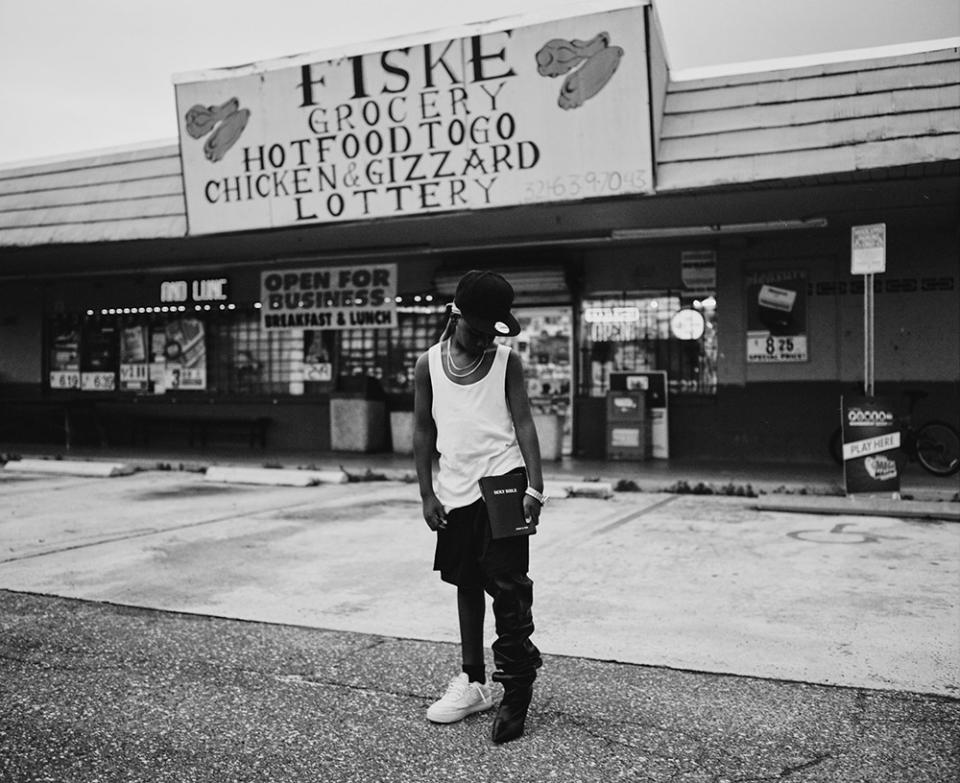
How did Symone get involved?
I wanted to experience leaning into my full femme, which is something I’ve never done. I’ll speak specifically to the Black and brown community by saying that there is this hyper unrealistic idea that you can be gay, but you still need to be masc presenting. I carry so much of that. “Be gay, but don’t let ’em know you’re gay.” I’ve seen Symone at different events over the years and her energy was always so special. I hit her up and said that I would love to do this with her if she could kind of guide me through and talk about her experiences becoming the drag queen that she is. It was such an interesting experience to do together. We shot our drag sequence first. When it was time for us to get out of drag, she looked at me and held my hand with almost, like, tears in her eyes saying, “I don’t think I can do it.”
She didn’t think she could be photographed outside of drag, off-the-clock. It was such an interesting thing because I feel more confident and comfortable in my masc, whereas this person felt the opposite. But when she saw me take my beat off, she said she would do it if I held her hand through it. It was so emotional for us. I hadn’t thought about her experience of feeling truly unseen as masc presenting, but then finding her power and her beauty in drag and that’s why she clings onto it and that’s why she’s so fucking good at it. She feels more powerful in it. As for me, when I showed my dad and my friends, they didn’t recognize that it was me in drag.
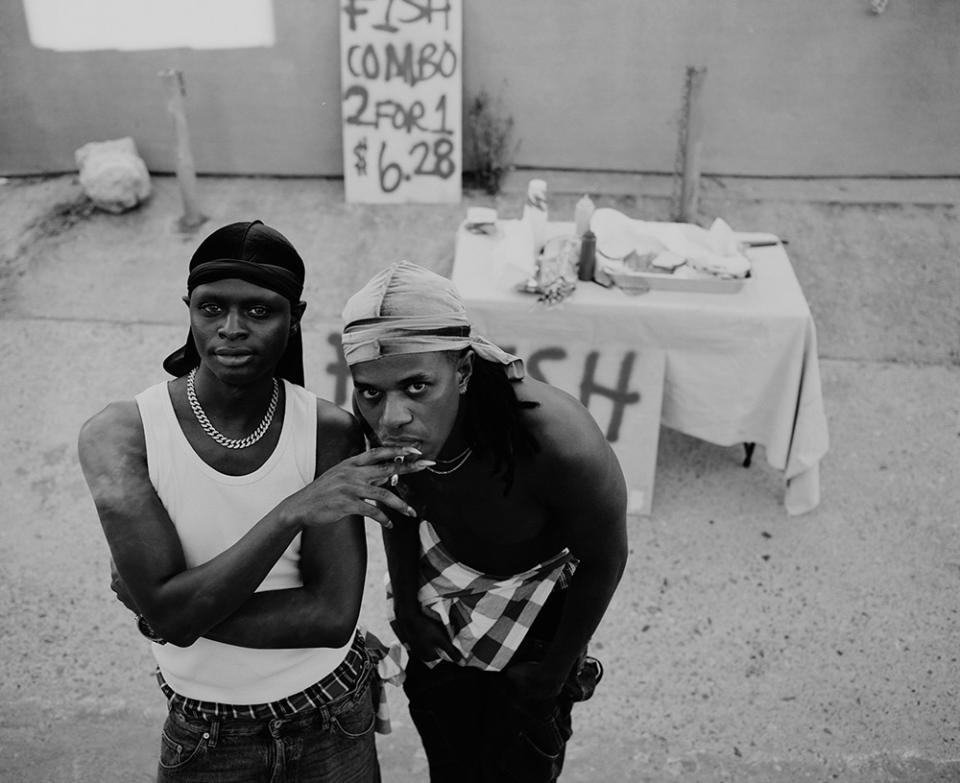
How did it feel?
It was freedom. It was liberating to allow myself to serve fish, and that’s what we call it in the community. That’s why it was layered with us selling the fish sandwiches for $6.28, which is a nod to the date of June 28, when the first brick was thrown to start the Stonewall revolution. It was us paying homage to the drag queens and queer liberation that have allowed us to take up space in this way. Again, this process was about flexing, bending things, changing things, seeing us in masc and then seeing us in femme.
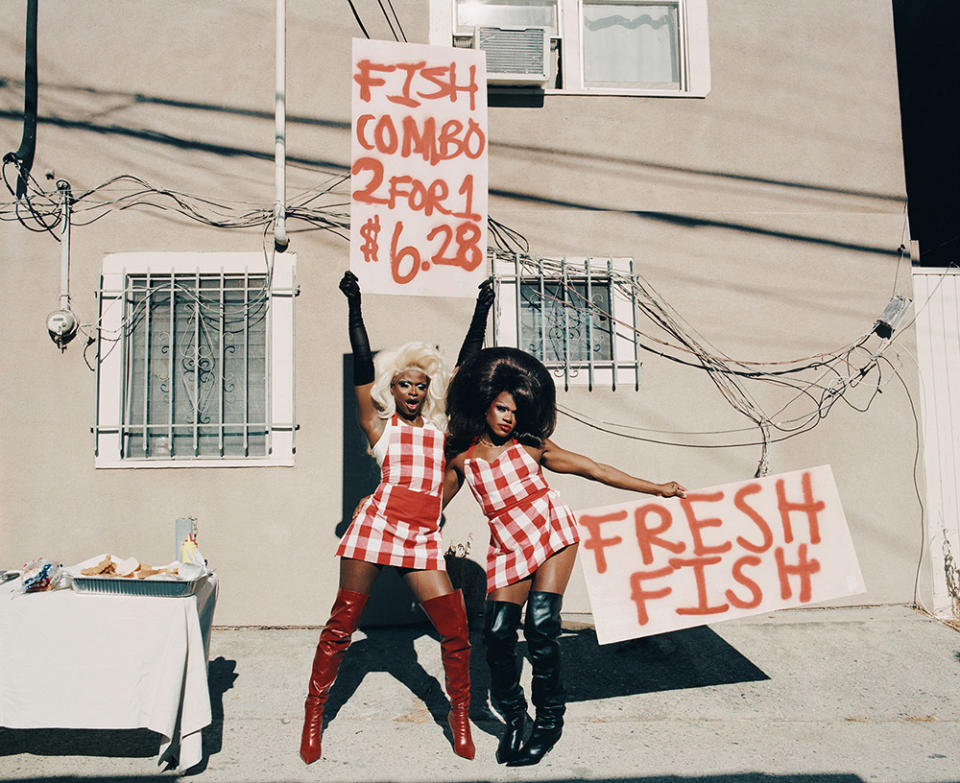
Back to that panic attack you mentioned. How did you get through it?
I spent a lot of years normalizing panic attacks; these things that happen in spaces where you feel vulnerable, sweat’s dripping down your back and you’re trying to say the right thing or not say anything at all. You’re moving out of character and not feeling like yourself. In having that panic attack, I immediately felt like 8-year-old Jeremy. Everything I had experienced, all the high moments, were suddenly gone and I was fearful and scared. I always talk about healing your inner child or being aware of your inner child so this was about me taking the time to do that. Creating a photo series is creative and can be aesthetically pleasing but the foundation of it is some healing shit for me. If anything, it made me aware of this sensitive spot that I have so I can protect it.
How do you feel coming out of this experience as you’re about to debut it for the world?
I know so much more about myself. I know about my areas of strength, I know my areas of weakness, and I’m just grateful that I’m able to have this interview with people like you and connect and get it out where people can see it. Maybe it will heal or touch someone’s life. That’s the power of art. I’ve felt that through the music I’ve created. I’ve felt that from the movies and projects I’ve been a part of. If one person can see it and forever be changed or impacted by it, I’m grateful. I’m grateful to know that by me being seen, by me being a vessel that other people will be seen, heard, supported, respected and loved.
Interview edited for length and clarity.
Best of The Hollywood Reporter

